Table of Contents
Securing a sporting event involves more than just monitoring for potential hazards. It’s about creating a comprehensive plan that considers everything from crowd management to emergency response.
For companies like ARDENT Protection, whose mission is to “professionalize the security and protection industry,” sporting event security isn’t just a job but a calling.
This blog explores the intricate measures involved in managing event security for sporting events and the importance of meticulous planning.
1. The Foundation: Understanding Venue Layout and Entry Points
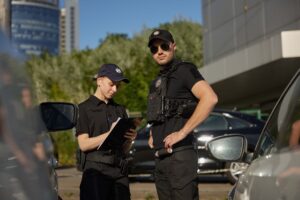
Before any large-scale event, security teams conduct a thorough site analysis to understand the layout, entry, and exit points. Knowledge of these aspects is crucial in managing the flow of people, vehicles, and even VIP attendees who may require additional safety measures.
By understanding the venue layout, security personnel can identify potential bottlenecks or vulnerable areas where incidents are more likely to occur. This awareness aids in the quick movement of people in case of an evacuation and allows for more strategic placement of security staff.
Example: During high-stakes games or championships, entry points are often limited to enhance control and maintain the integrity of ticketing. Security teams use checkpoints to screen for prohibited items like alcohol, weapons, or anything that could disrupt the event.
2. Crowd Management: Balancing Safety and Enjoyment
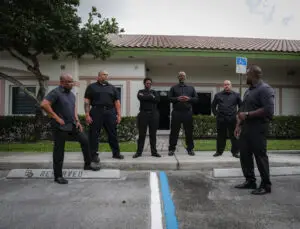
Crowd management is arguably one of the most challenging aspects of event security. Sporting events bring together thousands of fans, each with their unique expectations and emotions. Security professionals are trained to anticipate crowd behaviors, from celebratory moments to potential conflicts.
To manage large groups effectively, security teams employ various strategies, such as creating visible boundaries, using signage to guide movement, and placing officers at key locations for quick intervention if necessary.
Training in conflict de-escalation is also critical. Officers are often required to handle confrontational fans calmly and respectfully, a skill reinforced through ARDENT Protection’s dedication to continuous training and adherence to high standards.
3. Maintaining Professional Appearance and Demeanor

The professional appearance and demeanor of security staff can influence how they are perceived by the public. A well-groomed, composed security officer conveys authority and respect, deterring potential troublemakers. ARDENT Protection emphasizes the importance of this in their uniform and gear inspections, where every detail is scrutinized to ensure a clean, polished look.
This professional standard is a core part of ARDENT’s mission to elevate industry practices, projecting an image that reassures fans and establishes credibility.
4. Access Control and Surveillance: Keeping an Eye on the Entire Venue

At any large-scale event, managing access points is essential. Security teams monitor these areas to prevent unauthorized entry and maintain a count of people within the venue. In many cases, modern surveillance tools are employed to monitor crowds for potential issues like fights, theft, or medical emergencies.
Cameras provide a bird’s-eye view of the venue, allowing operators to detect suspicious behavior in real-time and relay information to on-ground staff for prompt response.
Surveillance Best Practices: Security teams use technology like facial recognition (when legal and feasible) or real-time communication devices to identify known threats. This enables security officers to respond to incidents quickly without drawing undue attention or causing unnecessary panic among attendees.
5. Rapid Response Teams and Emergency Preparedness
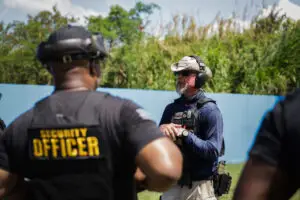
In the event of an emergency—be it a medical situation, fire, or an altercation—security teams need to respond immediately. ARDENT employs a specialized Emergency Response Team (ERT) trained to act swiftly and efficiently, following specific protocols to manage the situation with minimal disruption.
For fire-related risks, for example, security staff trained in fire watch protocols patrol the premises, ensuring exits are clear and that any fire hazards are reported immediately.
The presence of these specialized teams is essential, as they provide a layer of security that general event staff might not be equipped to handle. ERT members undergo additional training in areas like CPR, first aid, and emergency evacuation, equipping them to protect both lives and property in high-stress situations.
6. Incident Reporting and Accountability

After any incident, big or small, documenting what occurred is crucial for evaluating procedures and preventing future issues. ARDENT emphasizes rigorous reporting, where every officer is trained to provide detailed incident reports.
This information is invaluable in identifying patterns, such as recurring issues at specific venues or times, allowing security teams to refine their strategies.
Clear, standardized reporting also serves as a record for accountability, ensuring transparency with event organizers and law enforcement if needed. When incidents are documented thoroughly, they contribute to a safer and more prepared environment for future events.
7. Technology and Innovation: Modern Solutions for Modern Challenges
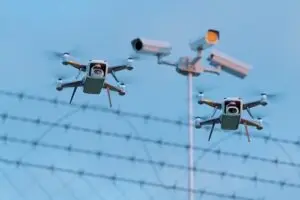
Technology has transformed sporting event security, enabling teams to operate more efficiently. Tools like mobile apps for incident reporting, real-time communication devices, and even drones for aerial surveillance are now commonly used in large venues.
These advancements help security officers maintain awareness across vast spaces, monitoring for issues that might go unnoticed otherwise.
In addition to surveillance, some venues use biometric scanning and AI-assisted analytics to prevent incidents proactively. This technology helps detect crowd density changes, identify restricted-area breaches, and flag unusual behavior patterns that could signify a threat.
8. Client Relations and Community Engagement
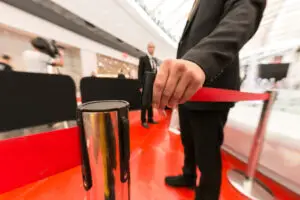
Beyond the physical aspects of security, ARDENT emphasizes the importance of client relationships. Effective communication with event organizers and local authorities is critical for pre-event planning, while post-event debriefings help refine protocols.
Security personnel often interact with fans and guests directly, offering guidance, directions, and assistance. This client-oriented approach is part of ARDENT’s core values and reflects the commitment to professionalism and community building.
Final Thoughts: The Role of Professional Security in Creating a Memorable Experience

Sporting events are about more than competition; they are community gatherings that foster camaraderie and excitement. Security teams play an invisible but crucial role, working behind the scenes to ensure every fan can enjoy the event without fear.
Through careful planning, advanced technology, and rigorous training, security professionals at companies like ARDENT Protection uphold the standards that keep sporting events safe and enjoyable.
As fans, we often take for granted the security measures in place to keep us safe. But for those who work in this field, every event is an opportunity to protect, serve, and uphold a mission much larger than themselves: to make safety an integral part of every event experience.
So the next time you’re at a game, take a moment to appreciate the effort behind the scenes—a commitment to keeping you and everyone else in the stands safe.
Quick Links
Resources
- Private Security
- Residential Security
- Corporate Events
- Retail & Loss Prevention
- Worksites & Warehouses
- Large Gatherings
- Health Providers & Clinics
- Hotels & Resorts
-
Cage#
8GY18 -
License#
B1900411 -
DUNS#
091352049


